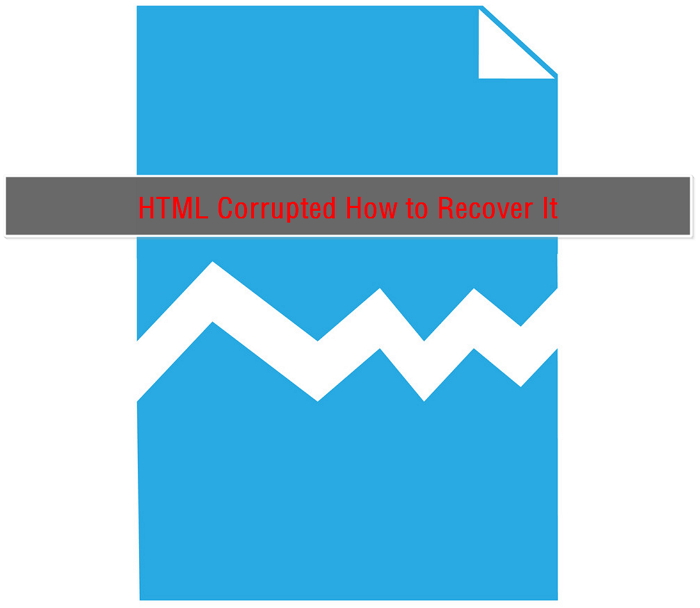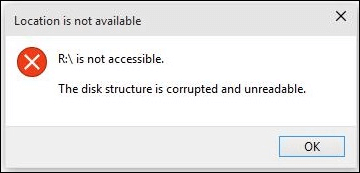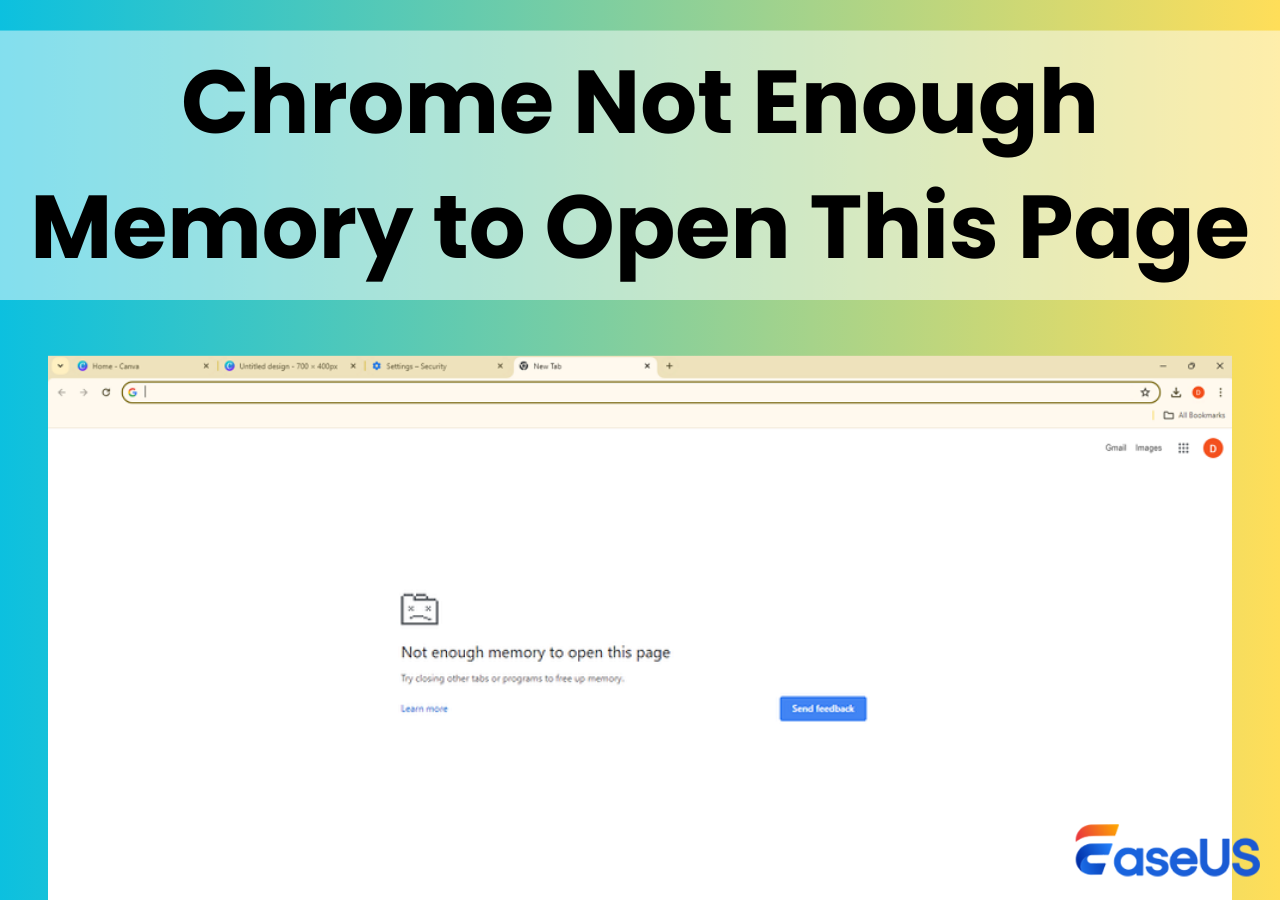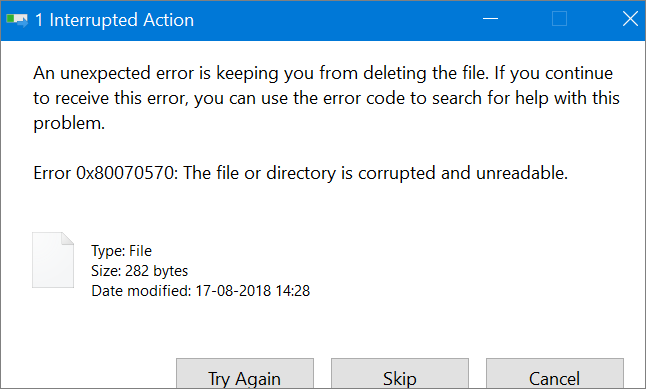-
![]() How to Fix Corrupted HTML File Recovery Solutions (Online & Offline)
How to Fix Corrupted HTML File Recovery Solutions (Online & Offline) December 15,2025
December 15,2025 6 min read
6 min read -
![]() The Disk Structure Is Corrupted and Unreadable? Here to Fix!
The Disk Structure Is Corrupted and Unreadable? Here to Fix! December 14,2025
December 14,2025 6 min read
6 min read -
![]()
-
![]()
-
![]()
-
![]() Fix the Pink Screen of Death Error on Windows 10/11
Fix the Pink Screen of Death Error on Windows 10/11 December 12,2025
December 12,2025 6 min read
6 min read -
![]() How to Enable or Disable TRIM on SSD in Windows 11/10
How to Enable or Disable TRIM on SSD in Windows 11/10 December 12,2025
December 12,2025 6 min read
6 min read -
![]() 8 Best Free External Hard Drive Recovery Software in 2025
8 Best Free External Hard Drive Recovery Software in 2025 December 15,2025
December 15,2025 6 min read
6 min read -
![]() How to Fix the Volume for a File Externally Altered Error
How to Fix the Volume for a File Externally Altered Error December 12,2025
December 12,2025 6 min read
6 min read -
![]() Stop Code 0x00000124: Causes, Fixes, and How to Recover Files
Stop Code 0x00000124: Causes, Fixes, and How to Recover Files December 12,2025
December 12,2025 6 min read
6 min read
Page Table of Contents
Is your M.2 SSD not showing up on your computer?How to enable an M.2 SSD in the BIOS? You typically need to access the BIOS settings during startup (usually by pressing F2 or Del) and navigate to the M.2 configuration section to enable the M.2 slot, potentially by setting the appropriate PCIe mode.
The specific steps may vary slightly depending on your motherboard manufacturer and model. This post will guide you through enabling M.2 in BIOS, ensuring it appears and functions as expected.
M.2 drive, known as M.2 SSD, is a small-sized disk that directly connects to the motherboard in a computer. M.2 has around 2500MB/s for data reading and writing. M.2 is also known as the Next Generation Form Factor (NGFF) for internally mounted computer expansion cards and associated connectors.
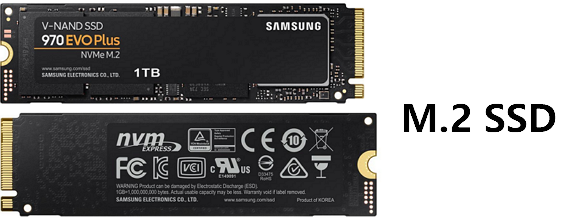
Due to its excellent performance, more and more users are cloning Windows to an M.2 SSD. However, some people complain that the M.2 SSD is not recognized on a Windows PC, and they don't know why. If your M.2 SSD is not showing up on your Windows PC, don't panic; Read on to learn how to fix this problem without losing data!
Why Is My M.2 SSD Not Showing Up
In this section, we'll explain why your M.2 drive isn't recognized on your Windows PC and provide steps to resolve the M.2 drive not showing up issue. Here are the symptoms and possible reasons for SSD not showing up:
| Symptoms | Possible Reasons |
| M.2 Not Recognized in BIOS |
M.2 is not connected or installed correctly on the PC, or not enabled in the BIOS - 👉How to enable M.2 in the BIOS |
| M.2 Not Recognized as Boot Drive | M.2 is not set as the boot drive - 👉How to set M.2 as the boot drive |
| M.2 Not Detected in Disk Management | The driver of the M.2 SSD is outdated - 👉Fix M.2 Is Not Showing in Disk Management |
| M.2 Not Showing Up in File Explorer |
The M.2 drive loses partitions or shows as unallocated - 👉Fix M.2 Not Showing Up in File Explorer in 2 Ways |
So, how do I get my computer to recognize my M.2? Here is the answer:
- 1. Check the symptoms of your M.2 drive.
- 2. Follow the respective cases and solutions to make M.2 recognized again.
Method 1. How to Enable M.2 in BIOS [Full Steps]
First, you should check if the M.2 is enabled in BIOS. Follow the steps below:
- Step 1. Open the computer case with a screwdriver.
- Step 2. Remove the computer case and find the M.2 SSD.
- Step 3. See if you installed M.2 correctly. If not, reinstall M.2.
- Step 4. Restart the PC and press F2/F8/Del to enter BIOS.
- Step 5. Go to the startup settings and see if the M.2 is enabled. If not, go and enable it.
- Step 6. If M.2 is an OS drive, go to the Boot menu and see if it's set as the boot drive. If not, set it as the boot drive.
Then, here are the detailed steps to enable the M.2 SSD in BIOS so you can access the stored data on it:
Fix 1. Reinstall the M.2 Drive
Step 1. Remove the computer or laptop case with a screwdriver.
Step 2. Remove M.2 from the computer or laptop.
Step 3. Reinstall M.2 on your computer or laptop:
- On laptop: Open the M.2 slot > Slide M.2 drive into the slot > Screw M.2 SSD drive in > Finalize and cover.
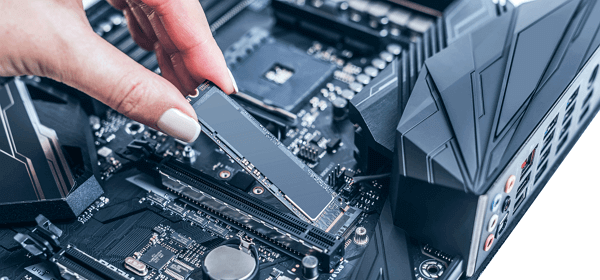
- On desktop: Find the M.2 connector, labeled as "PCIe" > Insert M.2 drive into the slot > Secure the M.2 SSD with the mounting screw.
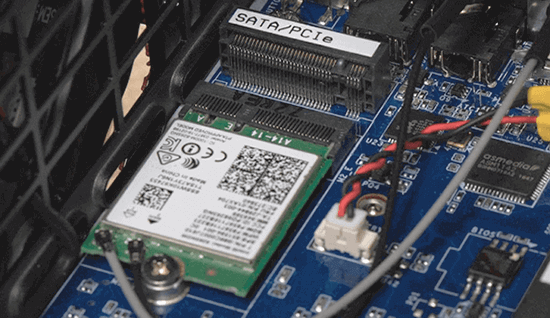
Step 4. Cover the computer case and restart the PC.
See if you can see the M.2 SSD recognized after the computer boots up. If not, continue with the next Fix.
Fix 2. Enable M.2 SSD in BIOS
Step 1. Restart the PC and press F2/F8/Del to enter BIOS.
Step 2. On the Main menu, expand "SATA Configuration".
Step 3. Select "Configure SATA as IED" and save the changes.
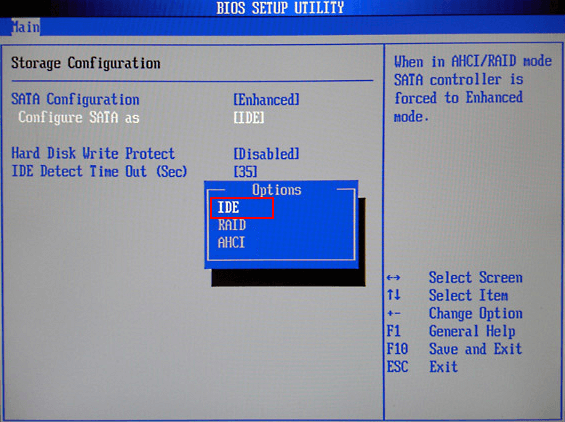
Step 4. Restart the computer, and you'll see M.2 showing up on your PC.
If this method works, share it with your friends to help them learn how to enable M.2 SSD in BIOS to make it show up on a Windows PC.
🔔Note: This method is not suitable for an OS M.2 SSD. Therefore, if your M.2 SSD is set as the OS drive, consider the next method. Before that, it is suggested that recovering data from the M.2 SSD using EaseUS Data Recovery Wizard, which can scan the stored files, including photos, videos, documents, etc., from an SSD that is not recognized by a Windows PC.
How to Recover Data from M.2 SSD That Is Not Showing Up
M.2 is not recognized and cannot access valuable data. If you are having the same issue here, follow the tips below for help:
- Part 1. Revert to the above solutions to fix the not-recognized M.2 SSD.
- Part 2. Recover Data after enabling the M.2 SSD in BIOS.
Editor's Suggestion:
- 1. After enabling the M.2 drive in BIOS on your computer, open the partition to check the files first.
- 2. If everything is all right, congratulations✅. You can stop here.
- 3. If some files or all data are missing, turn to the reliable EaseUS SSD drive recovery for help.
You Can Trust EaseUS Data Recovery Software
EaseUS Data Recovery Wizard has acquired an extensive technical base in data recovery and trusted by billions of users since 2005. Check out reviews on Trustpilot.
Here, EaseUS Data Recovery Wizard and its powerful SSD recovery feature can thoroughly scan and find all missing files on your M.2 disk. Follow the steps below to recover data from an SSD:
Step 1. Scan the SSD
Open EaseUS Data Recovery Wizard, select the SSD where you lost data, and click the "Search for Lost Data" button.
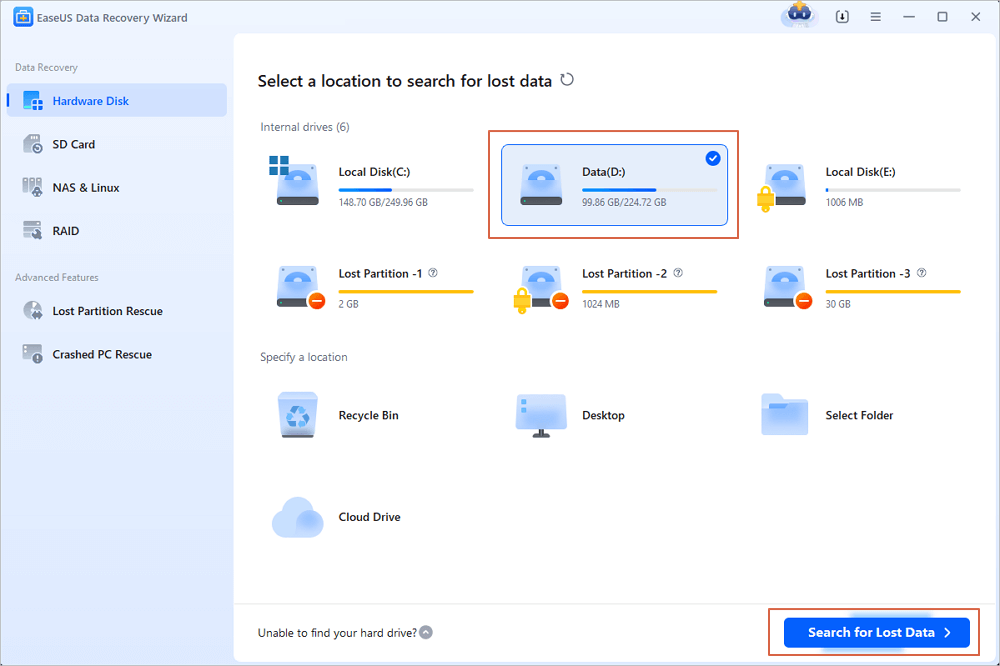
Step 2. View the results
When the scanning finishes, find lost SSD data by using the "Filter" and "Search" options after checking the "Deleted Files" and "Other Lost Files" folders.
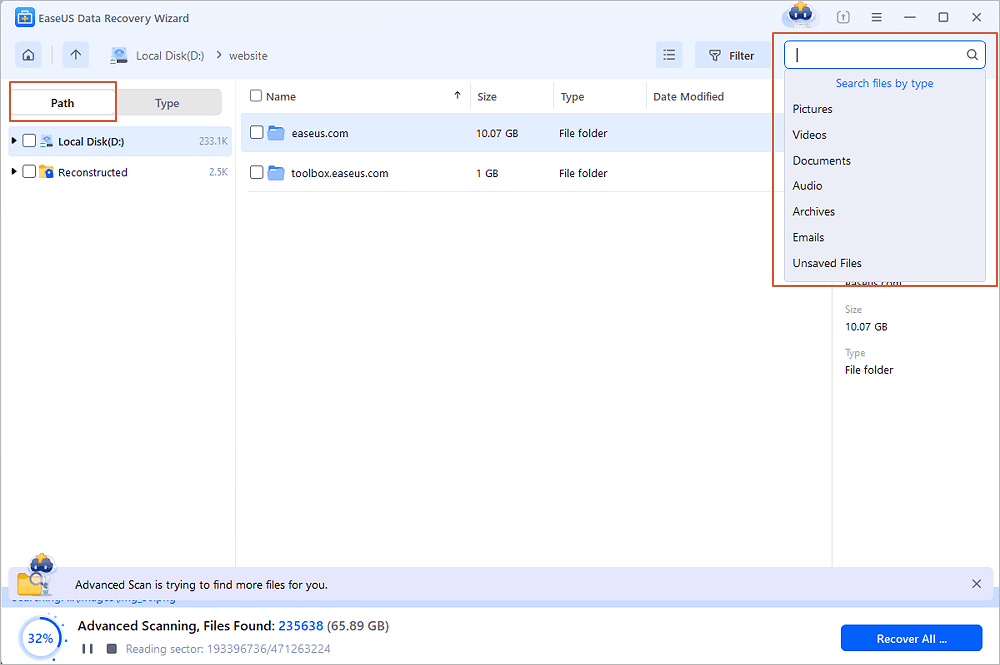
Step 3. Recover SSD files
Select desired data and click the "Recover" button to get back lost SSD files.
💡Tip: You can restore data on the local disks, external hard drives, and also the cloud storage.
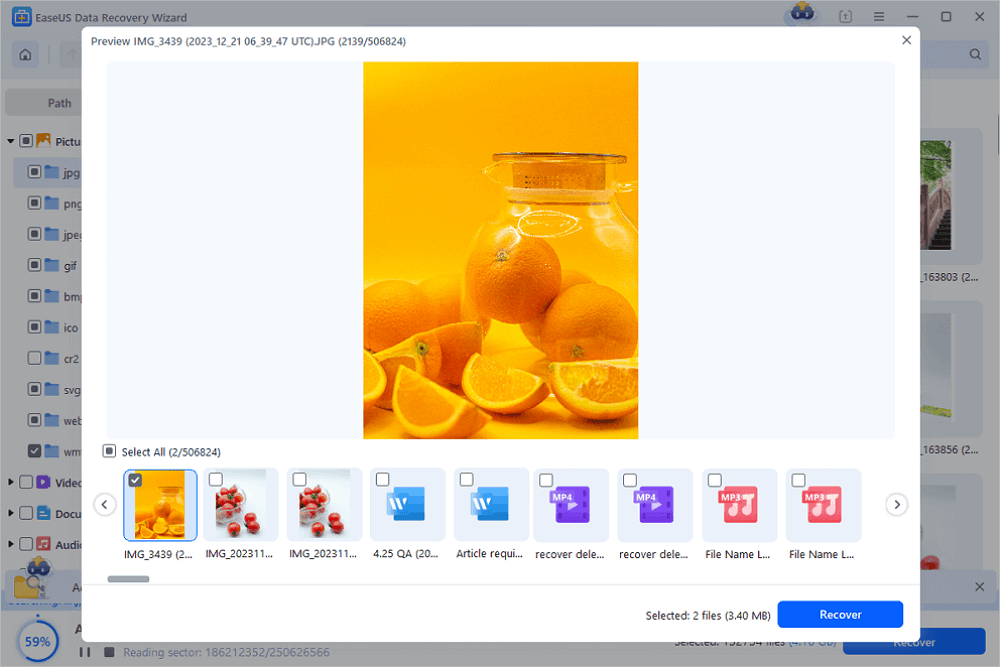
Method 2. How to Set the M.2 as the Boot Drive
How to Check:
Step 1. Restart the PC and press F2/F8/F11 or Del to enter BIOS.
Step 2. Go to the Boot Menu, at the boot order section, check if you've set the M.2 OS drive as the boot drive.
If not, go and follow the steps below to set it as the boot drive in BIOS.
Solution: Set M.2 SSD as Boot Drive (for OS Drive Only)
If your M.2 is an OS drive, you'll need to set it as the boot drive so that the computer can recognize it. Here are the steps:
Step 1. Restart the PC and press F2/F8/F11 or Del to enter BIOS.
Step 2. Go to the Boot Menu, select the boot priority section, and set the M.2 SSD as the boot drive.
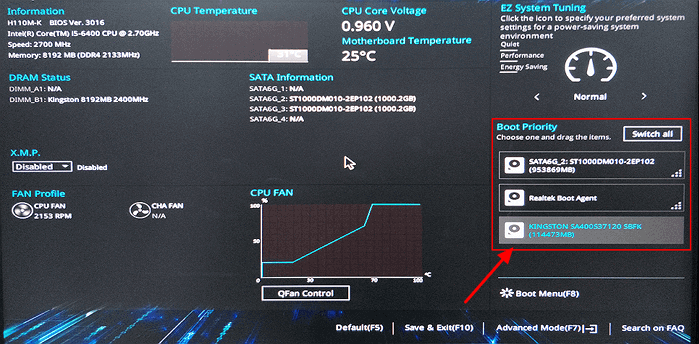
Step 3. Save the changes and restart the PC.
Windows will automatically boot up from the M.2 OS drive. If you think this post is informative, share it on SNS to help more people learn why an M.2 SSD is not showing up and how to fix it.
Method 3. How to Fix M.2 Is Not Showing in Disk Management
How to Check:
Step 1. Right-click the Windows icon and select Disk Management.
Step 2. Check if you see the M.2 disk shows up.
If not, it could be the drive driver is outdated. Here is how to fix it.
Solution: Update M.2 SSD Disk Driver
Step 1. Right-click the Windows icon and click "Device Manager".
Step 2. Expand Disk driver, right-click the M.2 SSD and choose "Update Driver Software".
Step 3. In the pop-up window, choose "Search automatically for updated driver software".
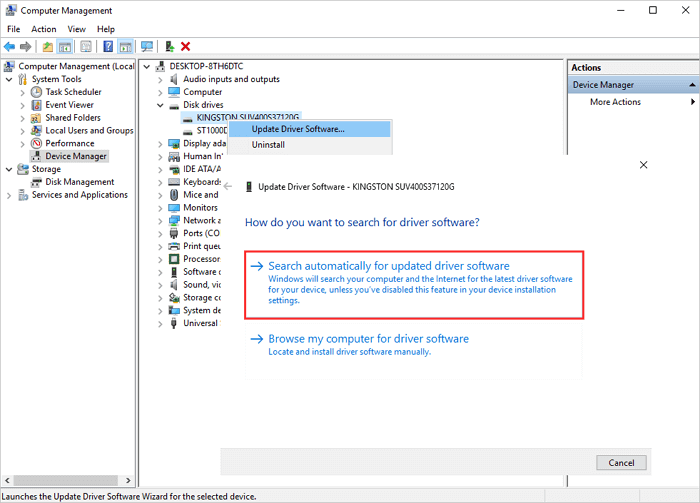
Then, wait for the computer to search and install the latest driver software.
Step 4. Restart the PC after the driver update process.
Then, you'll see your M.2 SSD showing up in Disk Management. If this method does not work, save your essential files using the EaseUS SSD data recovery tool first to avoid losing data.
Method 4. Fix M.2 Not Showing Up in File Explorer in 2 Ways
How to Check:
Step 1. Press Windows + F keys, open File Explorer.
Step 2. Check the volumes and see if you can see the M.2 volume.
- If not, go and check its state in Disk Management. I
- If it shows as raw, see how to fix the RAW drive.
- If M.2 shows as not initialized, you should first initialize the disk, and then create new partitions.
- If M.2 shows as unallocated, you should recover data and partitions on it.
Fix 1. Initialize M.2 SSD and Create New Partition On It
#1. Initialize M.2
Step 1. Press the "Windows + R" keys, type "diskmgmt.msc" and click "OK" to open Disk Management.
Step 2. Find and right-click the M.2 SSD, and click "Initialize Disk". If the disk displays as Offline, first right-click it and select Online.
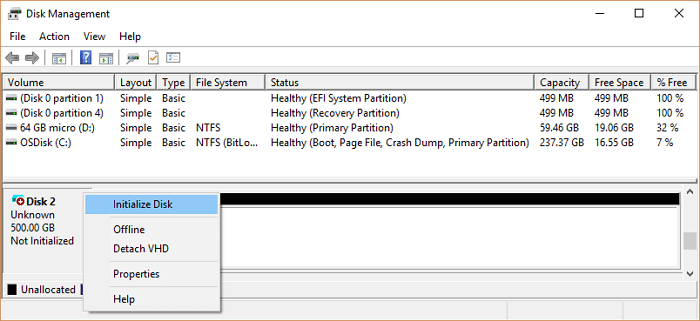
Step 3. Select the M.2 as GPT and click "OK" to accept the changes.
#2. Create Partitions on M.2
Step 1. Right-click the Windows icon, then click "Disk Management".
Step 2. Right-click on the unallocated space on M.2 SSD, and select "New Simple Volume". Click "Next".
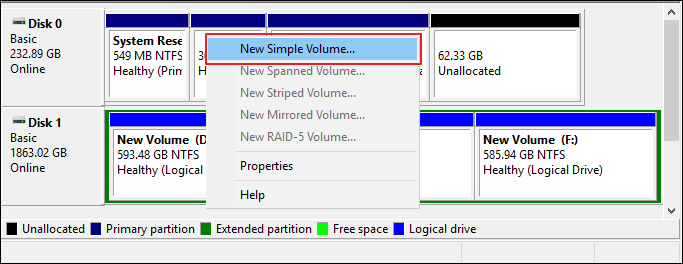
Step 3. Set the partition size, partition label, and partition format, and click "Finish" to complete.
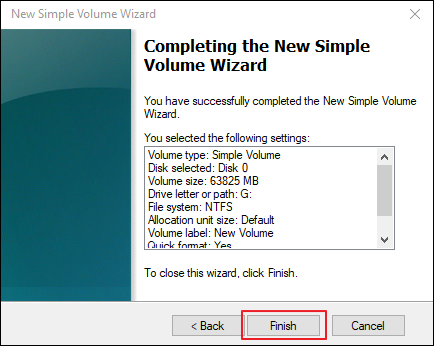
You May Also Like: How to Partition Hard Drive in Windows 10.
Fix 2. Recover Unallocated M.2, Including Data and Partitions
If M.2 is not a brand new disk, but it's a used M.2 data disk, you can refer to the guide here to restore data and partitions at one time.
Recover Lost Partition and Data
EaseUS Partition Recovery is designed to recover files and partition from lost or deleted partition. With EaseUS partition recovery software, you can retrieve your precious files and partition within minutes.

Conclusion
On this page, we explained the causes and symptoms of the M.2 SSD not recognized error in Windows PC. As for fixes toward different cases that may vary, we suggest you follow the guidelines above strictly to make the M.2 SSD work again. However, if you are missing some files after fixing the M.2 not recognized error, feel free to make EaseUS Data Recovery Wizard your first choice for full SSD recovery.
It will scan and find all missing M.2 SSD files immediately. Last, we highly suggest that you create a full backup of your M.2 SSD data regularly. It will always save your life whenever errors occur with the SSD. M.2 not showing up error is fixable, grab the right fixes to make it workable now!
Was this page helpful?
-
Brithny is a technology enthusiast, aiming to make readers' tech lives easy and enjoyable. She loves exploring new technologies and writing technical how-to tips. In her spare time, she loves sharing things about her game experience on Facebook or Twitter.…
-
Evan Galasso is a digital forensics and data recovery engineer with over 10 years of experience in the field. He presents opinions on the current state of storage media, reverse engineering of storage systems and firmware, and electro-mechanical systems of SSDs and HDDs.…

20+
Years of experience

160+
Countries and regions

72 Million+
Downloads

4.9 +
Trustpilot Score


Free Data
Recovery Software
Recover data up to 2GB for free!

